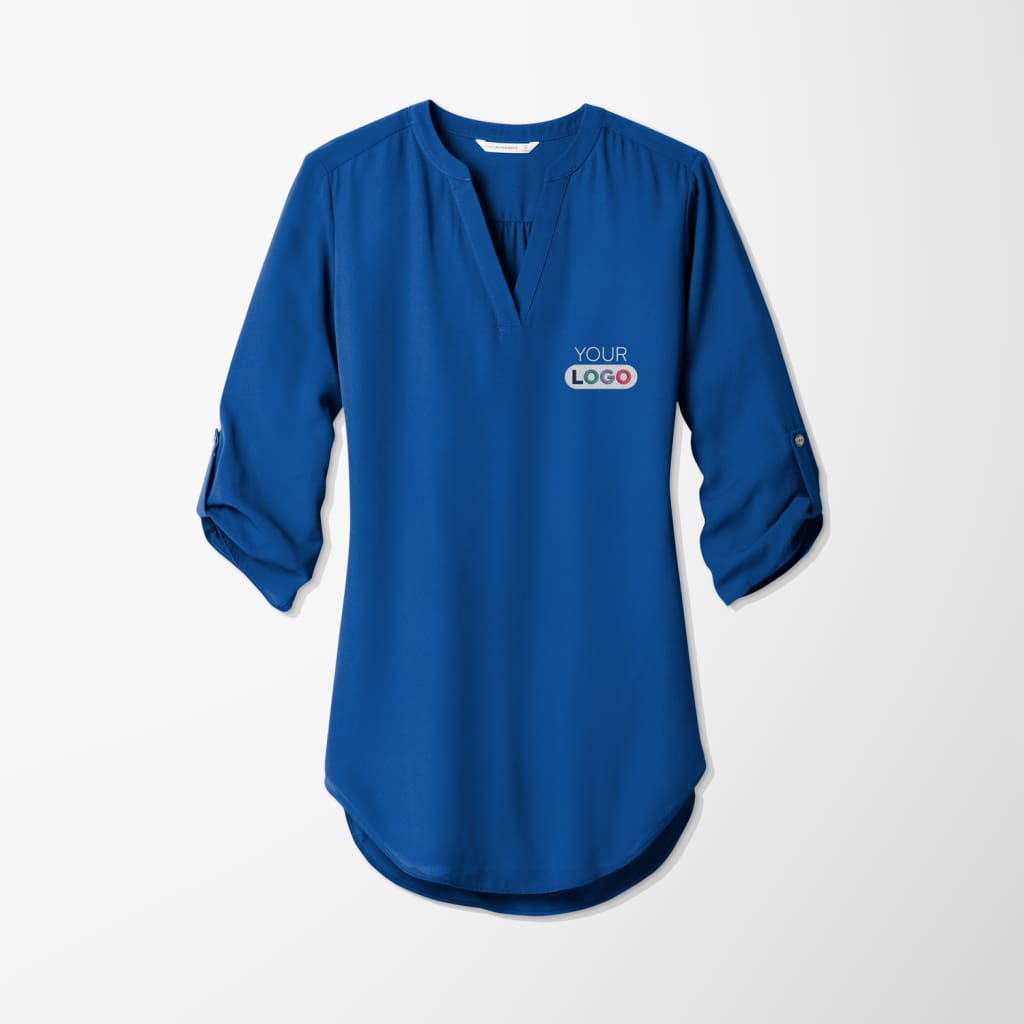Understanding Clothes: The Relevance of Material Selections in Your Wardrobe
The option of material in clothes plays a pivotal duty in both appearances and functionality. Different materials supply differing degrees of breathability, comfort, and toughness, directly affecting the wearer's experience. Understanding these nuances can enhance one's closet considerably. Yet, numerous overlook exactly how these choices can influence not just personal style, but also sustainability. What fabric choices could redefine your wardrobe and align it with both design and obligation?
The Role of Material in Style and Performance

Typical Textile Types and Their Qualities
When picking clothing, comprehending the characteristics of typical material kinds is crucial for making informed options. Cotton, a widely-used natural fiber, is understood for its convenience, softness, and breathability, making it suitable for laid-back wear and everyday garments. Linen, an additional natural option, boasts superb moisture-wicking residential or commercial properties and an unique appearance, ideal for cozy climates.Wool, often preferred for its warmth and sturdiness, differs in excellence; merino wool is soft versus the skin, while coarser kinds are made use of for outerwear. Synthetic materials like polyester and nylon offer sturdiness and resistance to creases, making them popular for activewear and traveling garments. Ultimately, blends, which integrate artificial and all-natural fibers, can boost capability while maintaining convenience. By identifying these textile characteristics, people can pick garments that straightens with their lifestyle and visual choices.
Breathability and Comfort: Choosing the Right Fabrics for Different Environments
Selecting the best materials for different climates can considerably improve comfort and total wearability. Breathable products are essential in warm climates, as they permit air circulation and wetness dissipation. Fabrics such as cotton, bed linen, and moisture-wicking synthetics successfully draw sweat far from the body, keeping the user cool and completely dry. Alternatively, in chillier climates, thicker fabrics like wool or fleece offer insulation while keeping breathability, making certain warmth without overheating.Additionally, the choice of textile weight plays an important duty; lightweight materials are more suitable for summer season, whereas larger alternatives are fit for wintertime wear. Recognizing the distinct buildings of each material allows people to clothe appropriately for differing climate condition. Ultimately, choosing comfortable and breathable materials tailored to details climates can significantly enhance everyday comfort and improve the general experience of wearing apparel.
Resilience and Treatment: Just How Fabric Affects Durability of Your Wardrobe
Selecting the best materials can substantially impact the longevity and care needs of a closet. Fabrics such as cotton and polyester are known for their durability and ease of maintenance, making them suitable for daily wear. In contrast, delicate products like silk and shoelace require more cautious handling and specialized cleaning approaches, which can enhance the time and initiative needed for care. Branded Clothing.Durability is additionally affected by the material's weave and coating; tightly woven materials often tend to stand up to damage far better than loosely woven choices. In addition, artificial blends commonly give boosted durability, incorporating the ideal top qualities of numerous fibers.Understanding the care directions for every material is crucial, as incorrect cleaning or drying out can cause premature wear. Eventually, picking sturdy products can result in a longer-lasting wardrobe, lowering the regularity of substitutes and adding to an extra sustainable style choice
The Effect of Fabric on Fit and Silhouette

Sustainable Textile Choices: Making Eco-Friendly Decisions
The influence of fabric expands beyond fit and silhouette to encompass ecological elements, prompting a growing rate of interest in lasting textile choices. Green materials, such as natural cotton, hemp, and Tencel, are acquiring traction amongst consumers who focus on sustainability in their closets. These products are typically generated with less chemicals and water, reducing their environmental footprint.Additionally, recycled textiles, made from post-consumer waste, offer an innovative option to the fabric market's air pollution trouble. Brands significantly accept transparency in their sourcing methods, permitting customers to make enlightened choices regarding their purchases.Choosing sustainable materials not only supports ethical methods however additionally motivates the garment industry to embrace even more liable production methods. As awareness of ecological problems climbs, individuals are advised to check my site assess the long-term impact of their textile choices, cultivating an activity in the direction of an extra sustainable and ecologically conscious strategy to style.
Raising Design: Just How Material Can Change an Attire
While lots of might concentrate on color and cut when picking an attire, the option of fabric plays a necessary role in elevating style and enhancing overall appearance. Various products convey distinctive moods and messages; for instance, silk exudes luxury and class, while jeans uses an informal, loosened up ambiance. The appearance and drape of a material can considerably change the silhouette, with organized materials giving a sleek appearance and softer ones producing an extra fluid, relaxed aesthetic.Moreover, the weight of the textile helpful resources affects wearability throughout periods. Light-weight textiles like bed linen and cotton are suitable for summer season, while heavier materials such as woollen and velour offer warmth and beauty in colder months. Understanding material residential or commercial properties, such as breathability and stretch, also encourages people to make informed selections that enhance comfort without jeopardizing design. Inevitably, the best material can transform an outfit from normal to amazing, making it a crucial consideration in any kind of wardrobe.
Frequently Asked Questions
How Do I Recognize the Fabric Web Content of My Garments?
To identify material material, one can examine treatment tags, conduct shed tests for fiber identification, or seek advice from fabric examples. These approaches assist distinguish products, guaranteeing informed selections for clothing care and maintenance in everyday wear.
Can Textile Selection Affect My State Of Mind or Confidence?
Textile choice can significantly influence a person's mood and self-confidence. Branded Clothing. Specific materials may evoke sensations of comfort or style, while others can feel uncomplimentary or limiting, eventually influencing self-perception and psychological well-being throughout the day
What Fabrics Are Ideal for Delicate Skin?
For individuals with delicate skin, all-natural textiles like linen, bamboo, and cotton are commonly suggested. These products are breathable, hypoallergenic, and much less likely to cause irritability, making them appropriate options for convenience and skin health and wellness.
Just how Do I Properly Clean and Treatment for Different Fabrics?
To appropriately wash and care for different materials, one must take into consideration each product's details requirements, consisting of temperature level setups, detergents, and drying out approaches, making certain long life and keeping the fabric's initial high qualities for suitable usage.
Exist Details Fabrics for Athletic or Efficiency Put On?
Sports or efficiency wear often uses materials such as nylon, polyester, and spandex. These products are developed for moisture-wicking, breathability, and adaptability, enhancing motion and comfort throughout physical tasks while offering durability and assistance. Conversely, in colder environments, thicker textiles like woollen or fleece give insulation while maintaining breathability, making sure heat without overheating.Additionally, the selection of textile weight plays a vital duty; light-weight fabrics are preferable for summertime, whereas much heavier choices are matched for winter wear. In contrast, delicate products like silk and shoelace require more mindful handling and specialized cleaning approaches, which can increase the time and effort needed for care.Durability is also influenced by the fabric's weave and coating; firmly woven fabrics have a tendency to resist wear and tear better than loosely woven options. In comparison, inflexible fabrics can limit motion but give a timeless, refined look.Moreover, the density and structure of the fabric can affect the aesthetic understanding of body shape. The effect of fabric extends past fit and shape to encompass environmental aspects, prompting an expanding interest in lasting fabric selections. The texture and drape of a textile can substantially alter the shape, with structured textiles offering a sleek appearance and softer ones producing a much more fluid, loosened up aesthetic.Moreover, the weight of the material affects wearability across seasons.